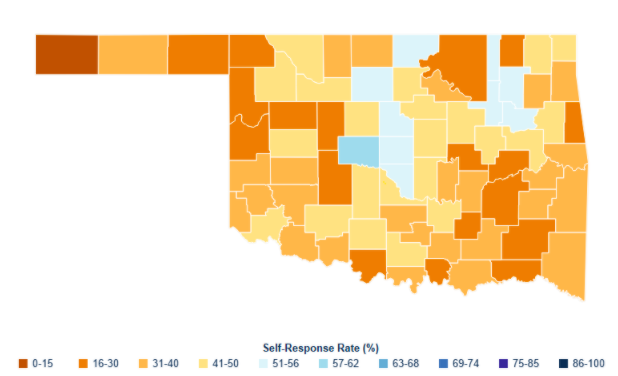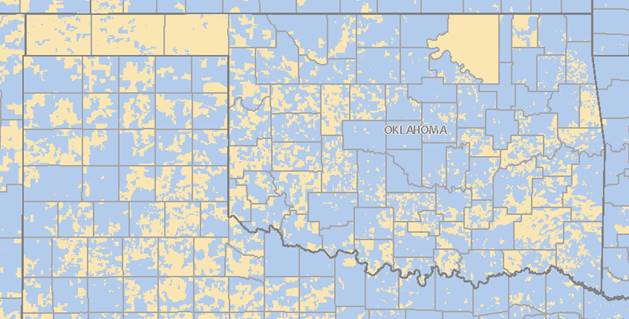In mid-March, the U.S. Census Bureau began its decennial count of the country’s population with the 2020 Census. Oklahoma historically has been undercounted in previous census counts, especially in rural areas.
As of April 22, 46.7% of Oklahoma households have responded to the 2020 Census compared to the national rate of 51.8%.

Top 10 Oklahoma counties for response rates, as of April 22
- Canadian County: 57.9%
- Cleveland County: 56.9%
- Rogers County: 54.5%
- Washington County: 54.0%
- Tulsa County: 53.0%
- Wagoner County: 52.9%
- Oklahoma County: 52.7%
- Garfield County: 52.6%
- Kay County: 51.7%
- Logan County: 51.5%
Bottom 10 Oklahoma counties for response rates, as of April 22
- Ellis County: 23.4%
- Roger Mills County: 22.6%
- Pushmataha County: 21.2%
- McIntosh County: 20.1%
- Adair County: 19.8%
- Dewey County: 19.1%
- Harper County: 18.2%
- Marshall County: 17.5%
- Beaver County: 16.6%
- Cimarron County: 9.4%
Some rural areas have not yet received mailed invitations to participate in the 2020 Census, which include a census ID number. As shown in the map below (courtesy of the U.S. Census Bureau), the area in the light yellow color – referred to as “update-leave area” by the Census Bureau – indicates areas that have not received mailed invitations.
Households in those yellow areas are able to self-respond without a census ID by phone or online at my2020census.gov if they have a city-style, or 911, address. Those without city-style addresses must wait for a census enumerator to deliver an invitation with a census ID. The Census Bureau will send enumerators to the update-leave areas, or those in yellow, from June 13 through July 9.
Any household that does not receive a census invitation in the mail or through an enumerator by July 9 may call the Census Bureau at 1-844-330-2020.

The original deadline for the 2020 Census count was scheduled for July 31, but has been extended to Oct. 31 due to the coronavirus outbreak.
The census can play a critical role in securing growth and prosperity for rural communities across the state. Census data is used to allocate $675 billion in federal funding for critical services including hospitals, fire departments, schools, roads and many other resources. Responses to the census also will determine the number of seats Oklahoma receives in the U.S. House and will be given to the state Legislature to use in redrawing district lines.
For more information, please visit the OKFB Census page or 2020Census.gov.
